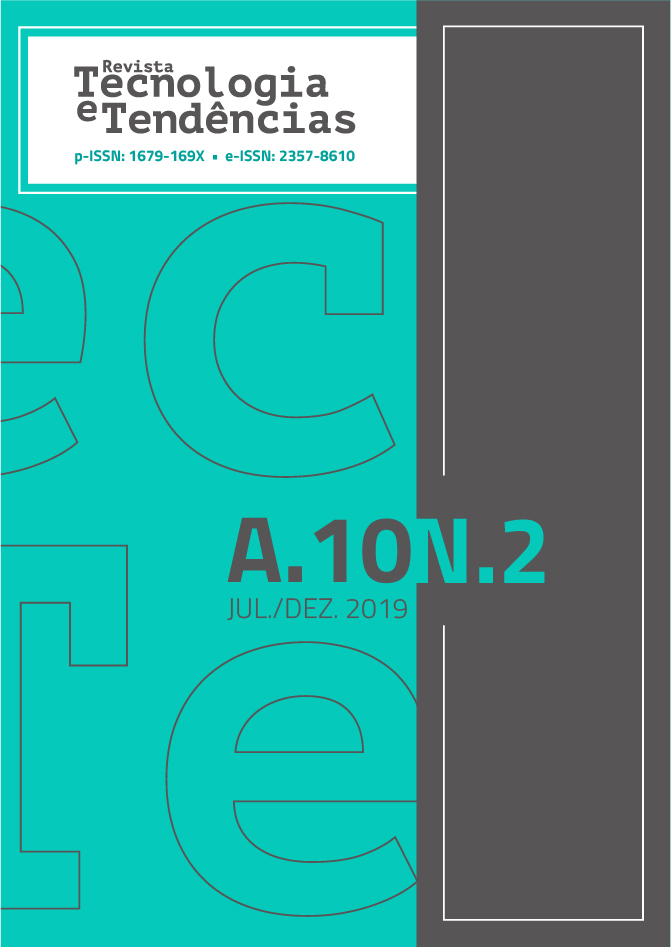OBTENÇÃO E CARACTERIZAÇÃO DE EXTRATO BRUTO DE CAVALINHA PARA FINS MEDICINAIS
DOI:
https://doi.org/10.25112/rtt.v10i2.1965Abstract
O uso de plantas medicinais para o tratamento de doenças está associado à medicina popular de diferentes partes do mundo. A cavalinha, pertencente à família Equisetaceae, é amplamente distribuída na região sul do Brasil. Possui propriedades medicinais, tais como diurética, hemostática, anti-inflamatória, cicatrizante, dentre outros princípios ativos intrínsecos. O presente trabalho teve por objetivo a obtenção de extratos brutos da planta Equisetum hyemale por uso de dois métodos extrativos diferentes, a caracterização dos extratos por meio de suas propriedades e potencialidades medicinais e avaliação do efeito da temperatura em ambos os extratos. Os resultados permitiram a comparação de ambos os métodos extrativos, por influência térmica (Soxhlet) e influência química (Maceração), utilizando técnicas como espectroscopia no Uv-visível e na região do Infravermelho, que permitiram a quantificação de clorofila e da atividade antioxidante. O cultivo celular em monocamadas como modelo biológico permitiu avaliar a citotoxicidade dos extratos brutos. Tendo em vista a carência de pesquisas científicas sobre o mecanismo de extração de ativos de origem vegetal, este trabalho contribui para a área de produtos naturais, os quais são utilizados para a melhoria da qualidade de vida.
Palavras-chave: Extração. Caracterização. Cavalinha.
ABSTRACT
The use of medicinal plants for the treatment of diseases is associated with folk medicine from different parts of the world. The “cavalinha”, belonging to the family Equisetaceae, is widely distributed in southern Brazil. It has medicinal properties such as diuretic, hemostatic, anti-inflammatory, healing, among other intrinsic active ingredients. The objective of the present work was to obtain crude extracts from the Equisetum hyemale plant by using two different extractive methods, the characterization of the extracts by their medicinal properties and potentialities and the evaluation of the temperature effect on both extracts. The results allowed the comparison of both extractive methods, by thermal influence (Soxhlet) and chemical influence (Maceration), using techniques such as UV-visible and Infrared spectroscopy, which allowed the quantification of chlorophyll and antioxidant activity. Cell culture in monolayers as a biological model allowed to evaluate the cytotoxicity of crude extracts. Given the lack of scientific research on the mechanism of extraction of plant-based assets, this work contributes to the area of natural products, which are used to improve the quality of life.
Keywords: Extraction. Characterization. Cavalinha.
Downloads
Published
Issue
Section
License
• Os autores mantêm os direitos autorais e concedem à revista o direito de primeira publicação com o trabalho licenciado sob a Licença Creative Commons - Attribution 4.0 International (CC BY 4.0).
• Os autores são estimulados a publicar e distribuir seu trabalho online (ex.: em repositórios institucionais ou na sua página pessoal), pois isso pode aumentar o impacto e a citação do trabalho publicado.
--------------------------------------------------------------------------------------------------------------------------------
• The authors retain the copyright and grant the magazine the right of first publication with the work licensed under the Licença Creative Commons - Attribution 4.0 International (CC BY 4.0).
• Authors are encouraged to publish and distribute their work online (eg in institutional repositories or on their personal page), as this may increase the impact and citation of the published work.

